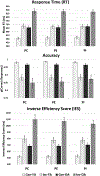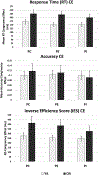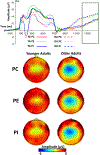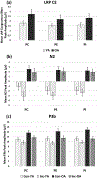Event-related brain potentials reveal strategy selection in younger and older adults
- PMID: 34331995
- PMCID: PMC8429274
- DOI: 10.1016/j.biopsycho.2021.108163
Event-related brain potentials reveal strategy selection in younger and older adults
Abstract
It is well-established that younger adults prioritize information accrued during different stages of stimulus evaluation ("early" versus "late") to optimize performance. The extent to which older adults flexibly adjust their processing strategies, however, is largely unexplored. Twenty-four younger and twenty-four older participants completed a cued flanker task in which one of three cues, indicating the probability that a congruent array would appear (75 %, 50 %, or 25 %), was presented on each trial. Behavioral and ERP (CNV, LRP, N2, and P3b) analyses allowed us to infer cue-driven changes in strategy selection. Results indicate that when both younger and older adults expected an incongruent array, they prioritized late, target information, resulting in a decreased susceptibility to the performance-impairing effect of distractors, extending the conclusions of Gratton et al. (1992) to older adults and supporting the claim that strategic control remains largely intact during healthy aging.
Keywords: Aging; Cognitive control; Congruency effect (CE); Event related brain potentials (ERPs); Lateralized readiness potential (LRP).
Copyright © 2021 Elsevier B.V. All rights reserved.
Conflict of interest statement
Statement of conflict interests
None of the authors of this article have any financial or other conflicts of interest regarding this work.
Figures










References
-
- Beck AT, Steer RA, & Brown GK (1996). Manual for the Beck Depression Inventory-II.
-
- Bergh D. Van Den, Doorn J. Van, Marsman M, Draws T, Derks K, Dablander F, Gronau QF, Kucharský Š, Komarlu AR, Gupta N, Sarafoglou A, Voelkel JG, Ly A, Hinne M, Matzke D, & Wagenmakers E (2020). A Tutorial on Conducting and Interpreting a Bayesian ANOVA in JASP. L’Année Psychologique, 1(1), 73–96.
Publication types
MeSH terms
Grants and funding
LinkOut - more resources
Full Text Sources
Miscellaneous

